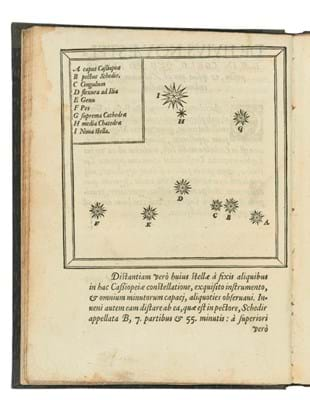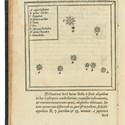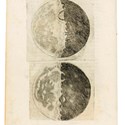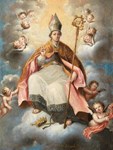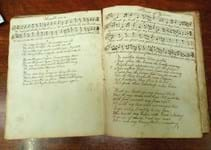Bid to £475,000 in a London auction was a 1543 first of the work that cataloguer Barbara Scalvini had picked as one of three astronomical works being offered in King Street sales that had “caused the human race to rethink its place in the grand scheme of things”.
Copernicus’ De revolutionibus orbium coelestium was part of a wide-ranging July 10 auction held at Christie’s (25/20/13.5% buyer’s premium).
At the beginning of the 16th century the Earth was still believed to be the centre of the universe. However, in 1543, at the encouragement of mathematician and fellow astronomer Georg Joachim Rheticus – who three years earlier had been allowed to publish a summary of Copernicus’ heliocentric theories – the great work was printed in full in Nuremburg.
Fearing that he might fall foul of the church authorities, Andreas Osander (who had taken over editing and proof-reading responsibilities when Rheticus took up an academic post in Leipzig) added an address warning the reader that, in his view, it presented hypotheses that “need not be true or even possible…”
This infuriated Rheticus and presumably Copernicus as well, but the latter was by this time very ill and died shortly after.
The rare survivor offered in London this summer, which had been valued at £500,000-700,000, showed some repairs and was partially washed in a modern binding fashioned from old vellum.
Only a handful of copies have made more, the most expensive at $1.9m (then £974,360) being a copy in the 2008 Christie’s New York sale of Richard Green’s great scientific library. Largely untrimmed, unwashed and unpressed, it was in a simple period vellum binding.
The original manuscript survives to this day in the Jagellonian Library at Cracow University.
Braune rarities
The previous day’s £2.59m Christie’s sale of scientific books from the collections of Peter and Margarethe Braune had also contained its share of astronomical rarities.
It was on a November night in 1572 that the great Danish astronomer Tycho Brahe realised that a bright new star had appeared in the night skies.
Nowadays it is identified as supernova SN 1572, thought to be some 7500 light years from Earth, but even then it was clear evidence that the long-held Aristotelian view of an unchanging celestial realm was wrong.
Brahe first published his findings in De nova… stella, a slim work of 1573 that is now of great rarity.
There was some waterstaining to the copy in the Braune sale, which also lacked a couple of preliminaries and was bound in 19th century boards with an incomplete 1577 work on a comet sighting by D Chytraeus, a Rostock theologian.
However, only two copies are recorded at auction since the 1930s, and that sold for £380 in 1978 as part of the great Honeyman scientic library had the last six leaves present in facsimile. The Braune copy sold well over estimate at £140,000.
Galileo telescope
It was in 1610 that Galileo published Sidereus Nuncius, a work in which he describes and illustrates what he had seen with the aid of the telescope of 30-times magnification he had constructed.
As well as confirming what Copernicus and Brahe had found, he could see that the moon was mountainous, the Milky Way was composed of numerous stars and four moons orbited Jupiter,
Nowhere in his book does Galileo explicitly endorse heliocentrism, but a few years later his books were banned by the Catholic church under a papal decree that declared such a view of the Earth’s motion to be false and contrary to scripture. On the same day that Galileo’s work was banned, so too was Copernicus’ De revolutionibus orbium coelestium.
In 1633 a second judgment of heresy was handed down and Galileo spent the rest of his life under house arrest. It was only in 1758, that the church finally dropped its prohibition against books promoting heliocentrism.
Cosmological Kepler
Also part of the Braune sale was a 1619, Frankfurt first of Johannes Kepler’s cosmological treatise, Harmonices mundi, a work which contains his third law of planetary motion. Sold at £80,000, this copy was bound with the Apologia, an appendix of 1620-21 containing his objections to the rival theories of Robert Fludd.
Other Braune successes included, at £26,000, an 1842, Prague offprint of Johann Christian Doppler’s first statement of a principle now known as the ‘Doppler Effect’. Now a fundamental tool of modern astronomy, it involves the increase or decrease in the frequency of sound, light, or other waves as the source and observer move towards or away from each other.


